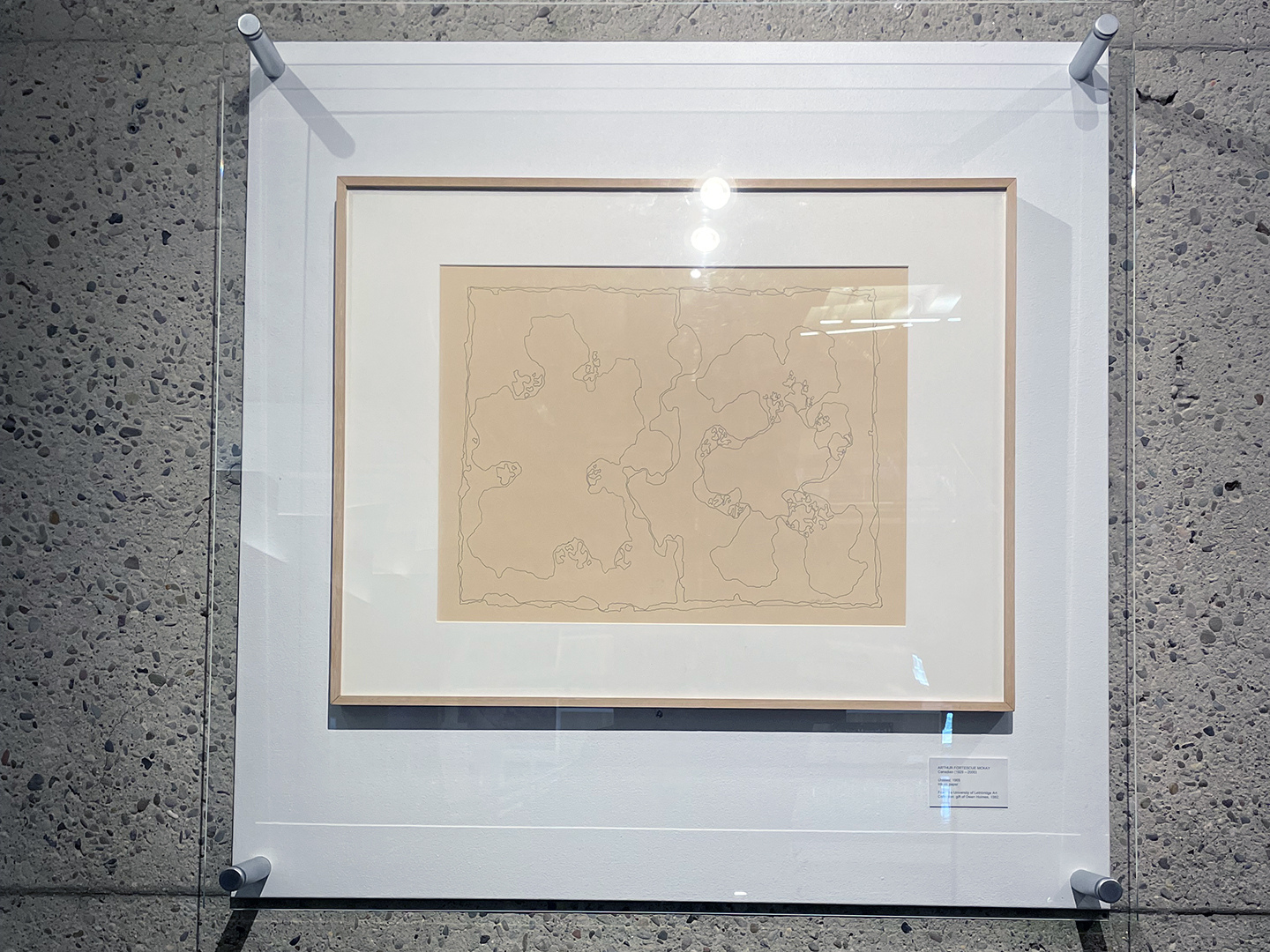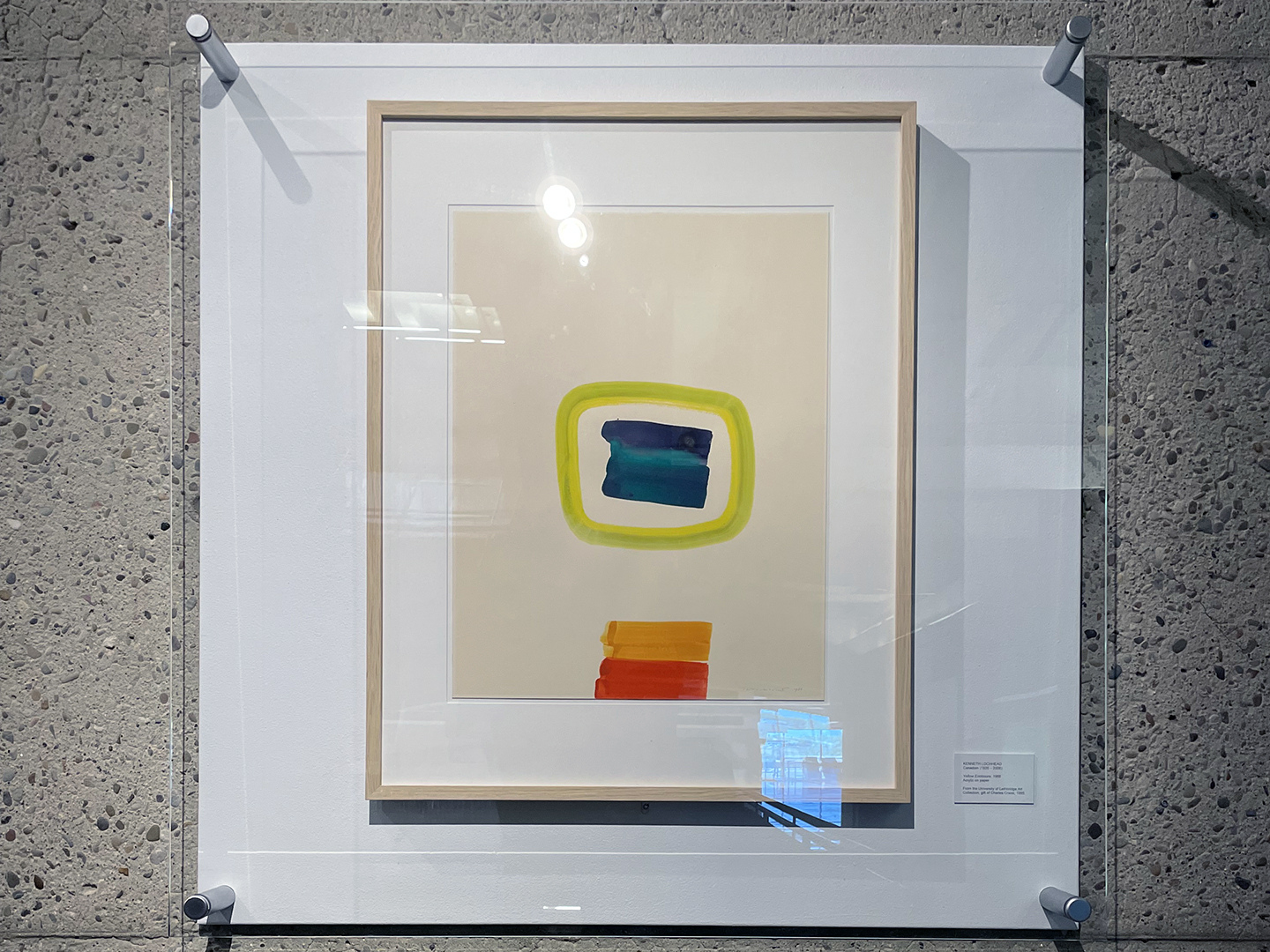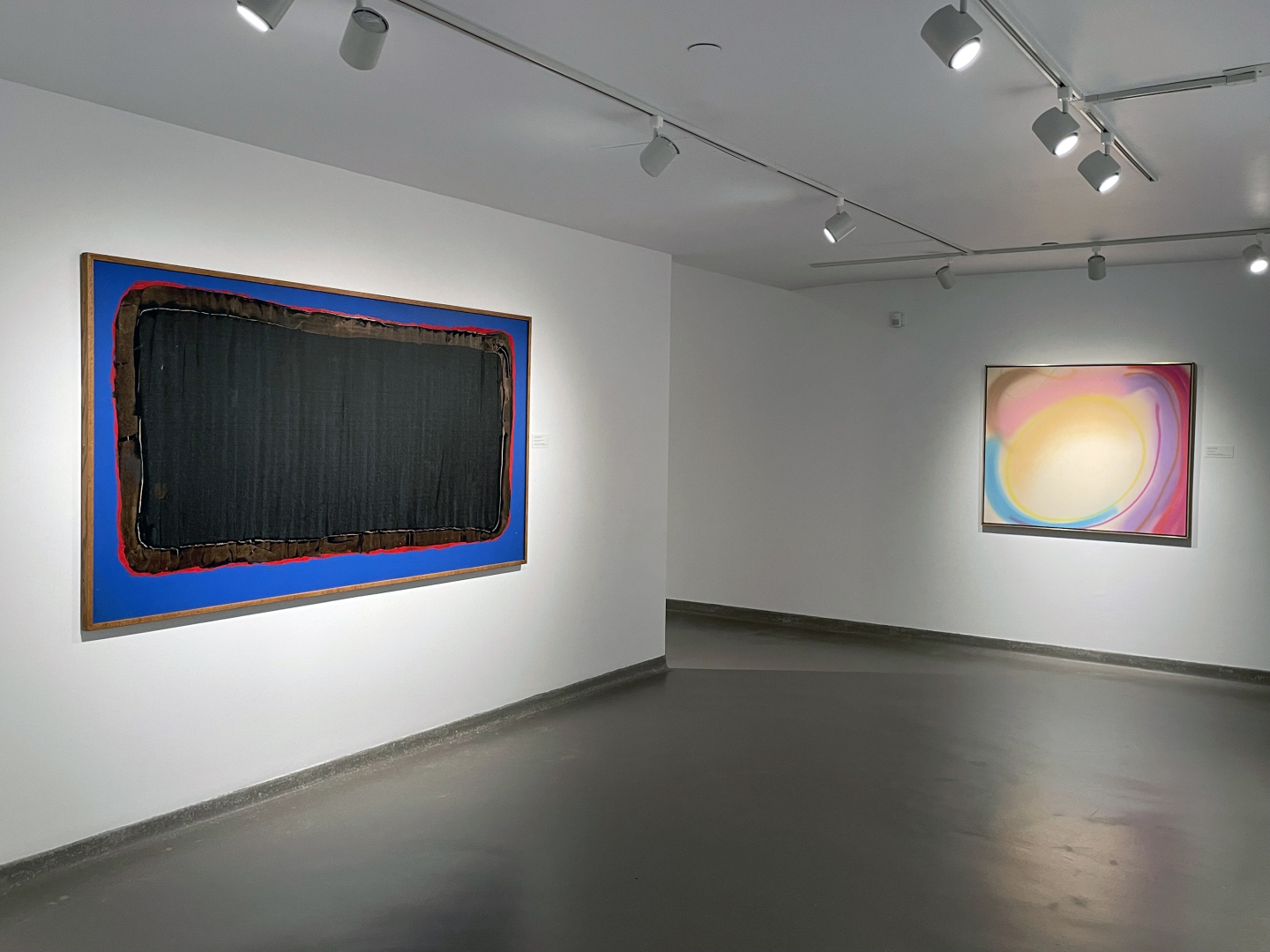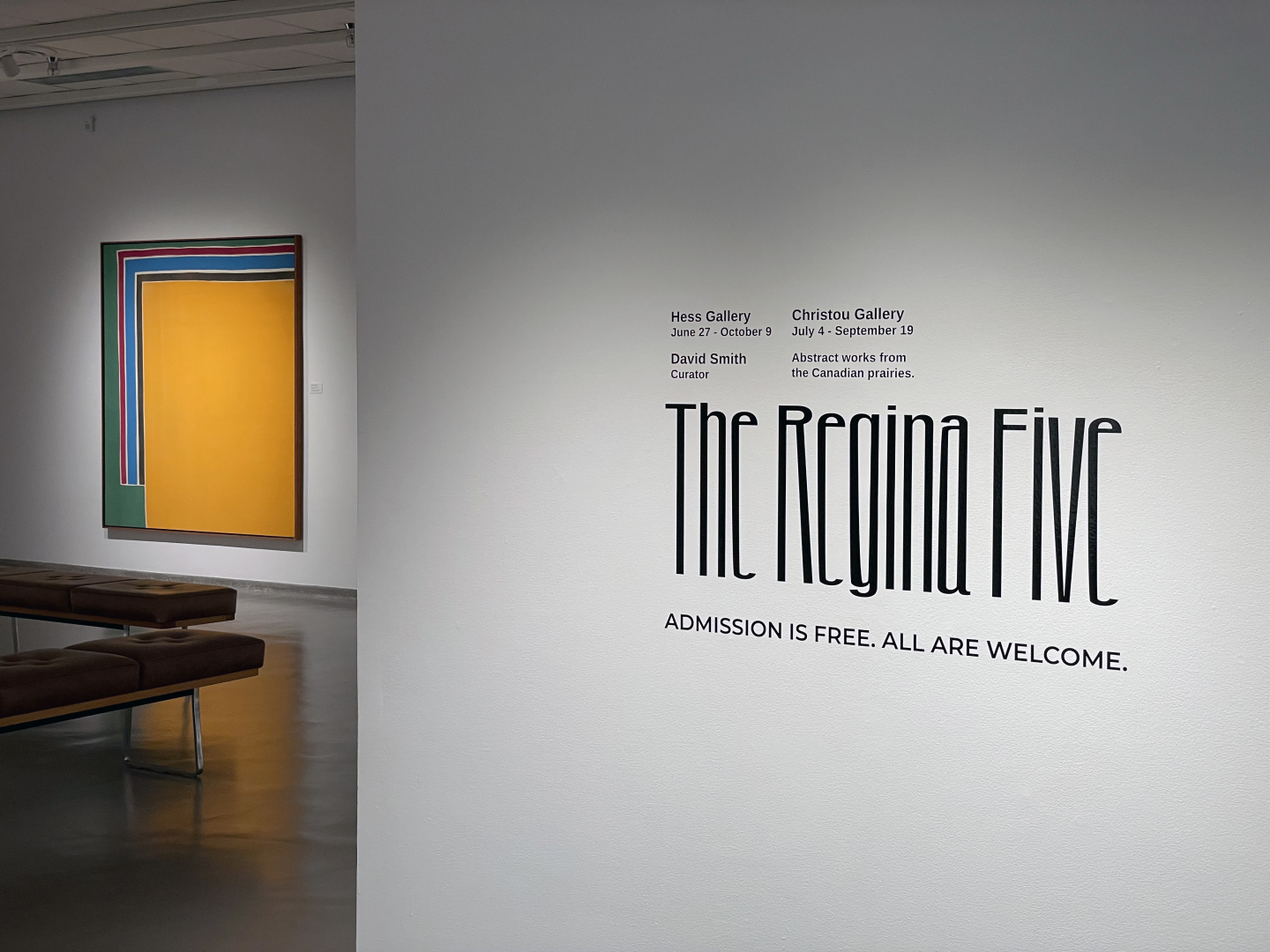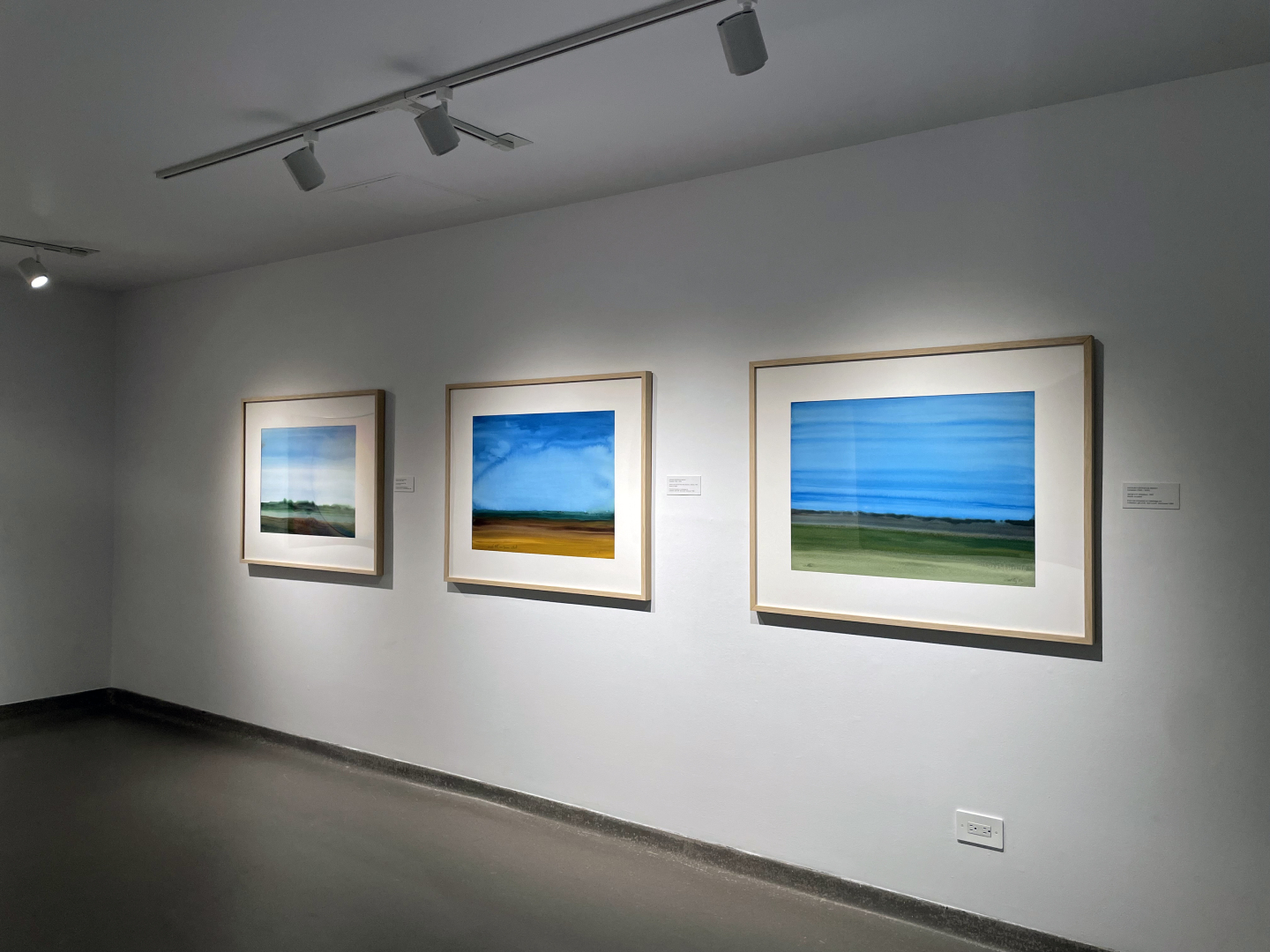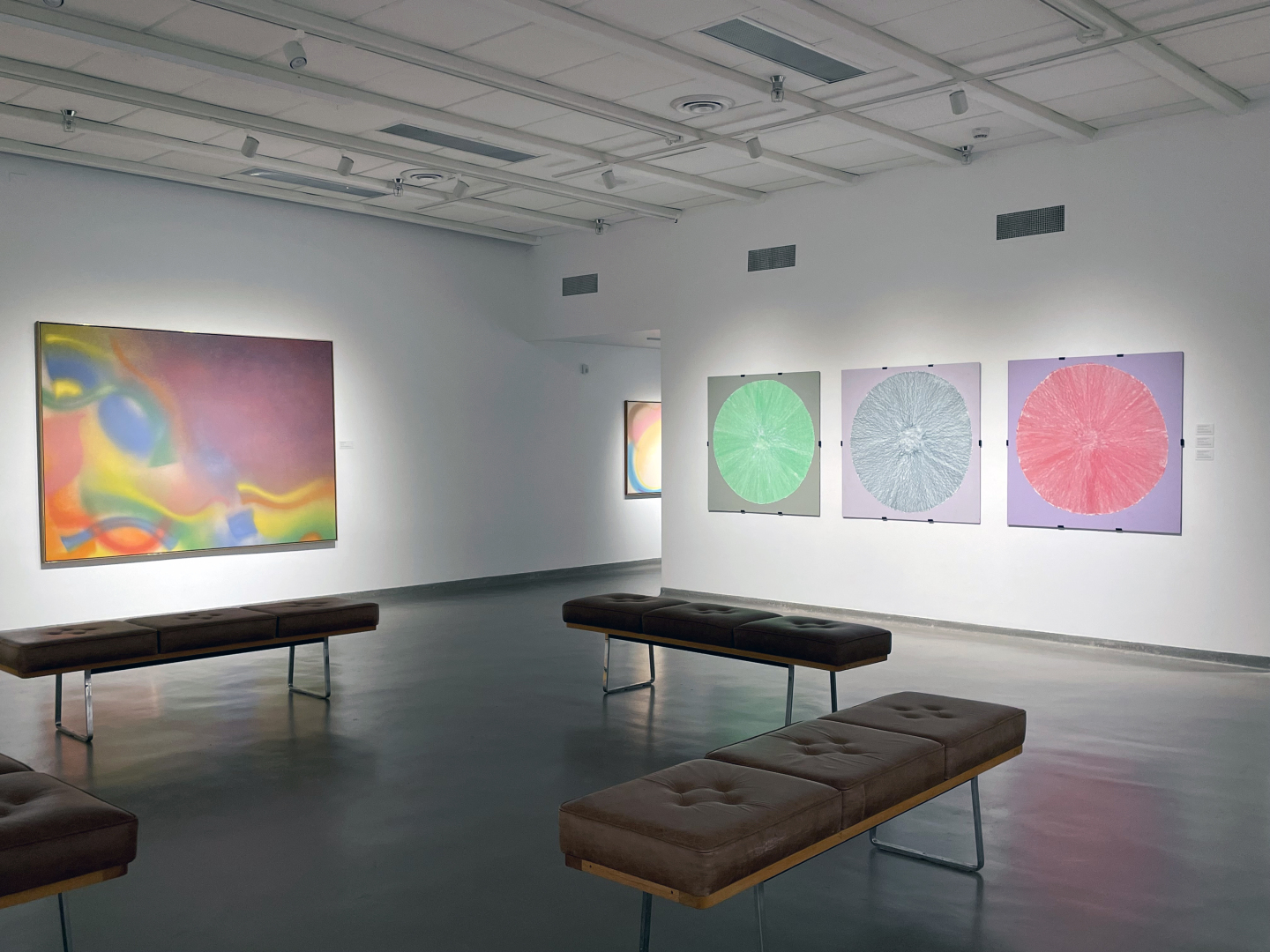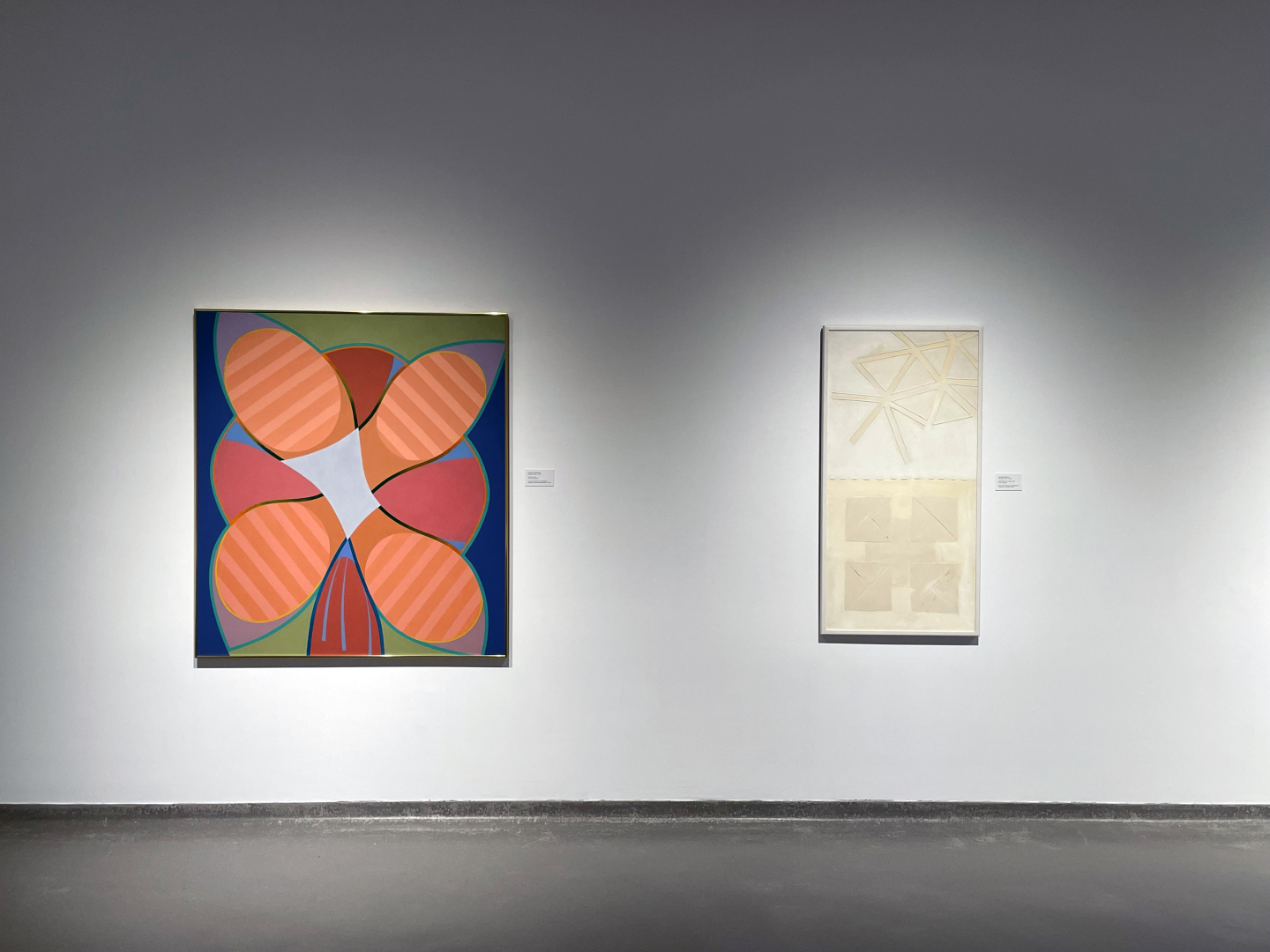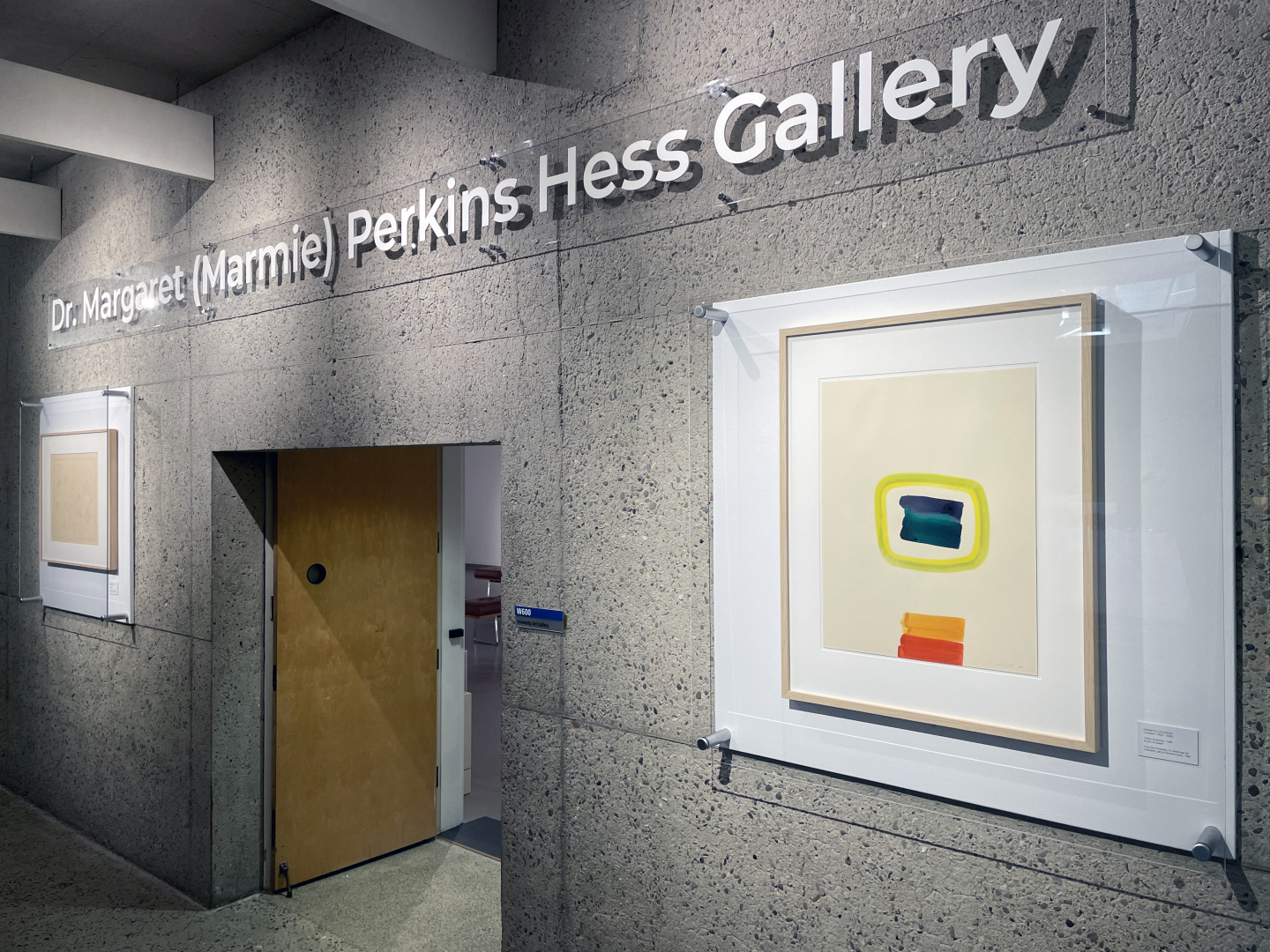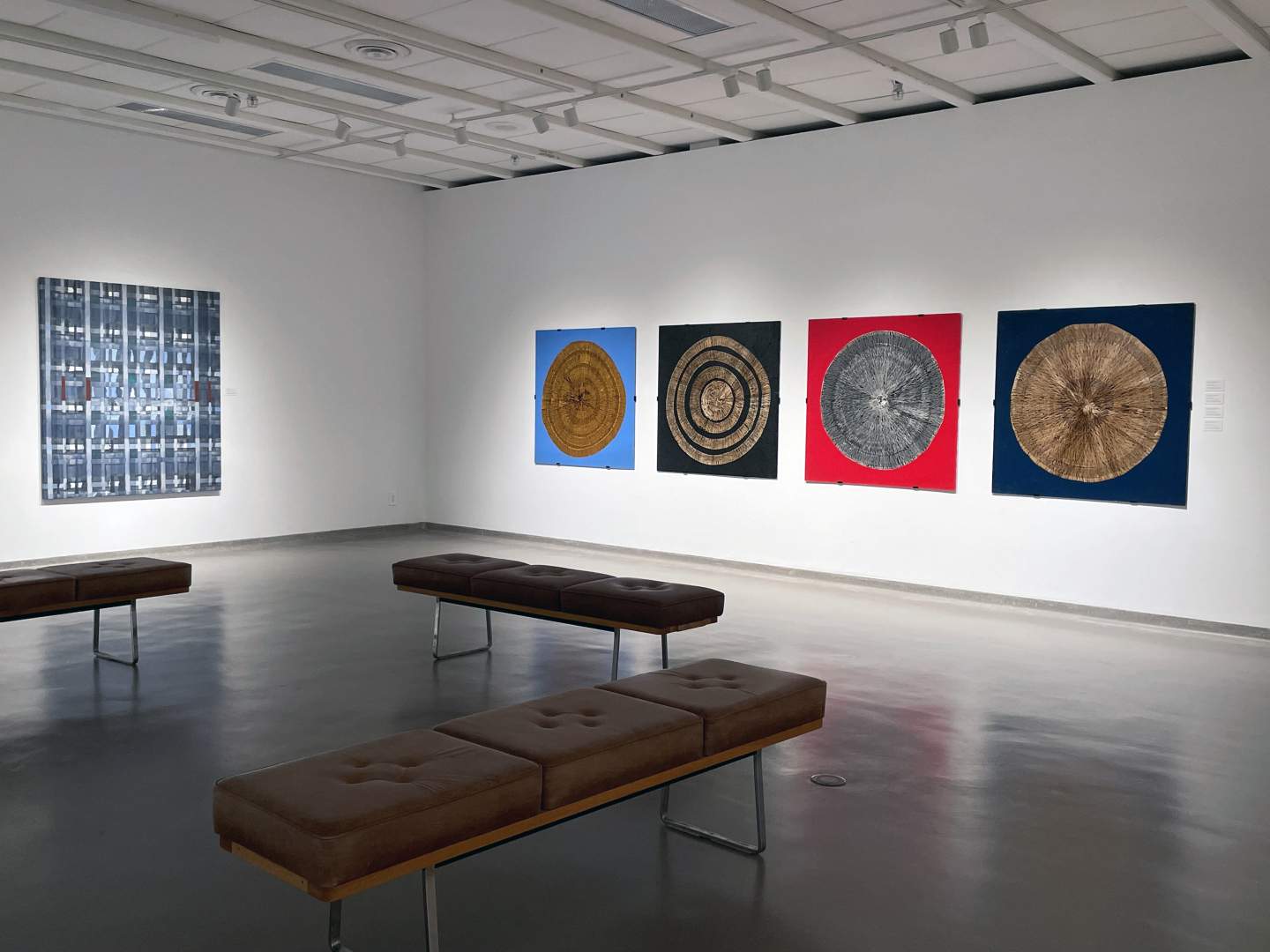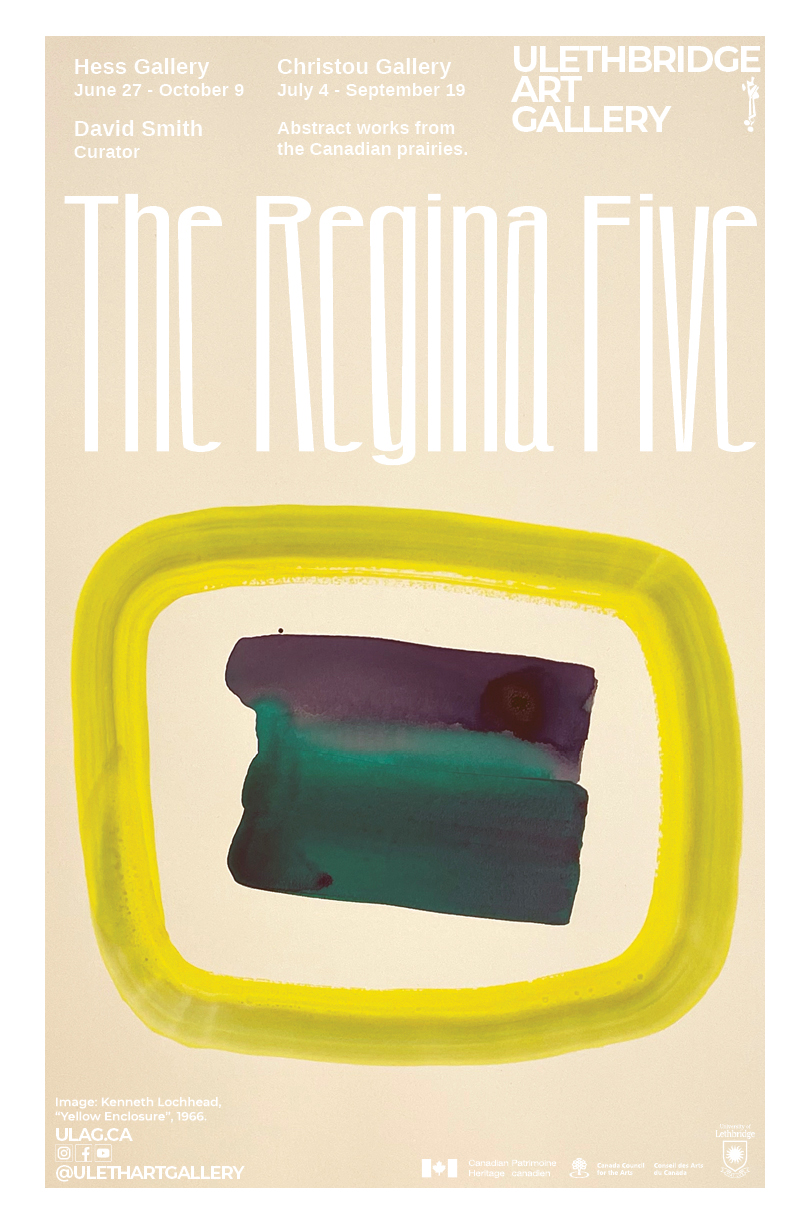Dr. Margaret (Marmie) Perkins Hess Gallery
The Regina Five
June 27 – October 9, 2025
Curator: David Smith
Works from the ULethbridge Art Collection
Abstract works from the Canadian prairies.
Curatorial Statement
The Regina Five refers to a group of artists—Arthur McKay, Ronald Bloore, Ted Godwin, Douglas Morton, and Kenneth Lochhead—who were active in Regina during the 1950s and 1960s and played a pivotal role in advancing abstract painting in Western Canada. Their embrace of abstraction challenged the traditional dominance of landscape and figurative art on the prairies. Featuring work by all five artists and spanning both the Helen Christou Gallery and the Dr. Margaret (Marmie) Perkins Hess Gallery, this exhibition celebrates their contributions to the evolution of Canadian art.
The 1950s marked a period of significant change in Saskatchewan. As Regina’s population grew from 70,000 to 120,000 over the decade, the city also saw the establishment of a new public art gallery—the MacKenzie Art Gallery, opened in 1953 and funded by the estate of Norman Mackenzie. Art education expanded as well, with the University of Saskatchewan founding a new Faculty of Art in Saskatoon and the School of Art opening at the Regina Campus. Lochhead and McKay influenced a generation of students through their teaching, while Bloore helped shape the broader Canadian art scene during his tenure as director of the MacKenzie Art Gallery.
Integral to the legacy of the Regina Five were the artist workshops at Emma Lake. These annual gatherings brought in artists and critics from across Canada and abroad, providing vital exposure to contemporary artistic discourse for artists working in relative isolation on the prairies. Lochhead and McKay organized the first workshop in 1955, led by artist Jack Shadbolt. Especially significant were the 1959 and 1962 workshops, which featured artist Barnett Newman and critic Clement Greenberg, respectively. In 1964, Greenberg curated the now-infamous Post-Painterly Abstraction exhibition, which reflected his belief in the future of painting through anti-expressionist, colour field approaches exemplified by Newman and Mark Rothko. The influence of the Emma Lake workshops cannot be overstated—they profoundly impacted many Canadian artists, including the acclaimed modernist Marion Nicoll. Unfortunately, the last workshop was held in 2012, and the program has been suspended indefinitely due to funding challenges.
In 1961, the MacKenzie Art Gallery mounted an exhibition titled The May Show to coincide with the annual meeting of the Canadian Art Museum Directors Association in Regina. This exhibition included the five painters, as well as modernist architect Clifford Wiens and sculptor Wolfram Niessen. The exposure proved invaluable: the National Gallery of Canada subsequently picked up the exhibition—excluding the architect and sculptor—and retitled it Five Painters from Regina. This is how the group came to be known as the Regina Five. In 1964, Lochhead took on the role of associate professor at the University of Manitoba, and in 1966, Bloore moved to Toronto, where he became director of art and professor at York University. Thus, the group eventually parted ways. Though their artistic styles varied greatly, they were united by a shared ambition to bring abstraction to the forefront of Canadian art, rather than by a singular aesthetic vision.
David Smith
Assistant Curator / Preparator
Nasgaard, Roald. “Emma Lake and the Regina Five, 1960s.” Essay. In Abstract Painting in Canada, 143–63. Vancouver, B.C.: Douglas & McIntyre, 2008.
“The Regina Five: 50 Years Later.” MacKenzie Art Gallery, April 21, 2020. https://mackenzie.art/exhibition/the-regina-five-50-years-later/.
